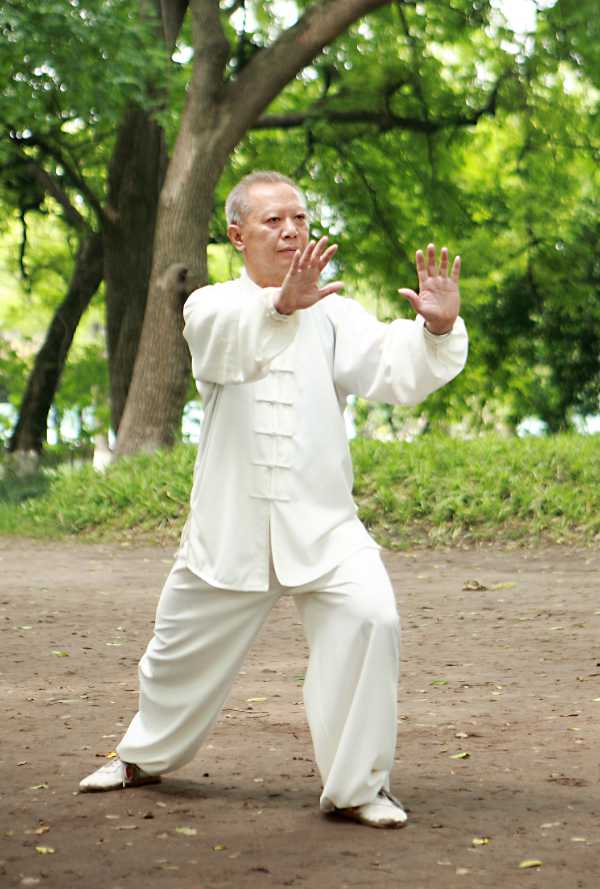An Introduction to Taiji:
Moving with Balance and Intention
 Taiji (太极), often spelled “Tai Chi” in the West, is one of the best-known movement practices from China—and for good reason. Though it began as a martial art, Taiji has become widely practiced for health, relaxation, and longevity. Millions of people around the world now perform its flowing movements daily, especially older adults looking for gentle but effective ways to stay active.
Taiji (太极), often spelled “Tai Chi” in the West, is one of the best-known movement practices from China—and for good reason. Though it began as a martial art, Taiji has become widely practiced for health, relaxation, and longevity. Millions of people around the world now perform its flowing movements daily, especially older adults looking for gentle but effective ways to stay active.
Taiji is based on the philosophy of balance—between movement and stillness, strength and softness, effort and release. Movements are slow and continuous, coordinated with breathing and awareness. This makes it both a physical exercise and a form of moving meditation.
In traditional Chinese medicine, Taiji helps keep Qi—the body’s vital energy—circulating smoothly. Modern studies support its many benefits: improved balance, reduced joint pain, better sleep, lower stress, and even enhanced immune function. Because Taiji emphasizes shifting weight from one leg to the other, it builds leg strength and coordination in a subtle way. For older adults, it’s particularly helpful for preventing falls and maintaining mobility.
Taiji has a long history, traditionally traced to Chen Village in China, though it has roots in Daoist philosophy and classical Chinese medicine. Over time, different family styles developed—Chen, Yang, Wu, and others. While these styles differ in form and emphasis, they all share the same foundation of whole-body movement, mental focus, and inner stillness.
You don’t need to know which style to begin. A good teacher will emphasize posture, breath, and mindful attention rather than choreography. Many beginners start with short, simple sequences or basic standing movements. Classes often begin with gentle warm-ups, followed by form practice, and end with calming breath work or standing meditation.
To find a teacher, check local parks, senior centers, Chinese cultural associations, or wellness clinics. Many communities offer beginner classes—some even outdoors. Online classes are also widely available, but it helps to find one with clear, slow instruction and an emphasis on safety and relaxation over performance.
There’s no special gear needed. Loose, comfortable clothing and a quiet place to stand are enough.
Taiji isn’t about learning fast—it’s about moving with intention. Even a few minutes a day can shift your energy, focus your mind, and leave you feeling more connected to your body. It’s a tradition that doesn’t rush, and in that, there’s great wisdom.
Vocabulary Guide
- Taiji (太极) – Pronounced “tie-jee,” a traditional Chinese martial art now widely practiced for health and balance. It emphasizes slow, flowing movement, breath, and awareness.
- Qi (气) – The body’s vital energy. In taiji, movement and breath are coordinated to promote the smooth flow of qi throughout the body.
- Daoist philosophy (道家 dàojiā) – A traditional Chinese worldview emphasizing harmony with nature, balance of opposites, and the power of stillness and flow—central to taiji practice.
- Form (套路 tàolù) – A sequence of movements practiced in taiji. Beginners may learn just a few moves at first; complete forms can be short or long, depending on the style.
- Standing meditation (站桩 zhànzhuāng) – A posture-based practice often included in taiji, used to cultivate inner stillness, balance, and awareness.







